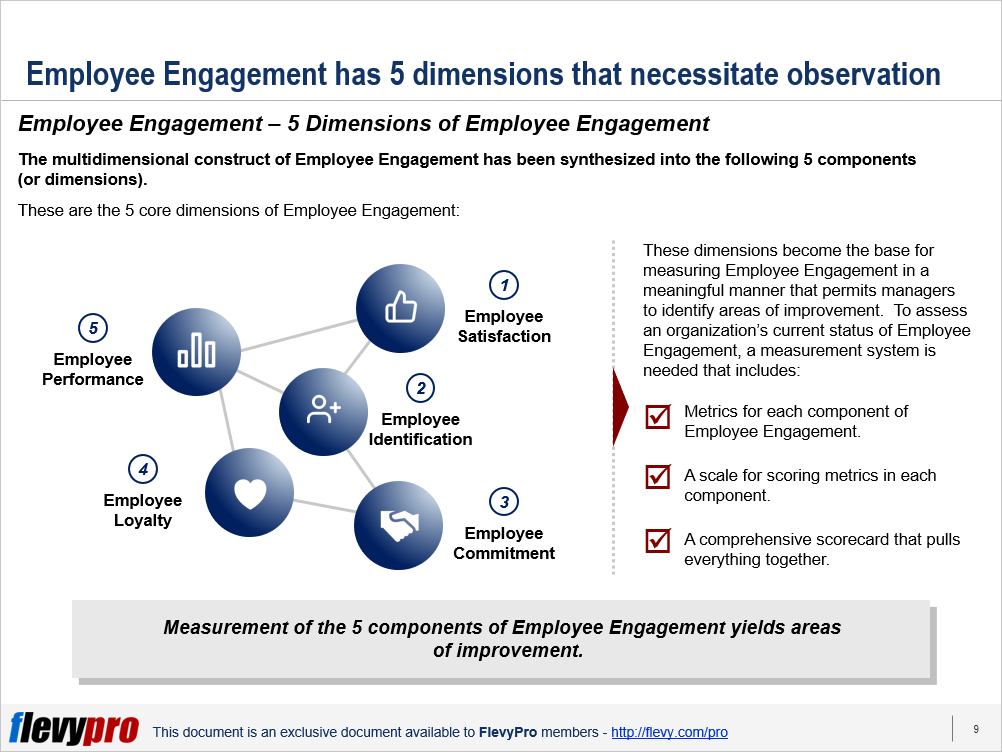Organizations typically focus on Customer-centric Design in their Strategic Planning and overlook the critical driver of Performance, Growth and Operational Excellence—their employees. With cut-throat competition now the norm the realization has become clearer that employees are:
- The face of the business and create lasting—or perishing—brand impression.
- Sources of innovation and organizational knowledge.
- Representation of the company’s service philosophy.
- Expected to live by its Organizational Culture and values.
Employee Engagementhas emerged as one of the significant pillars on which the Competitive Advantage, Productivity, and Growth of an organization rests. What, exactly, does it mean when an employee is engaged? Employee Engagement, over the years, has been thought of in terms of:
- Personal engagement with the organization.
- Focus on performance of assigned work.
- Worker burnout.
- Basic needs (meaningful work, safe workplace, abundant resources).
- Attention on Cognitive, Emotional and Behavioral components related to an individual’s performance.
Although Employee Engagement is widely seen as an important concept, there has been little consensus on its definition or its components either in business or in the academic literature.
Kumar and Pansari’s 2015 study define Employee Engagement as:
"a multidimensional construct that comprises all of the different facets of the attitudes and behaviors of employees towards the organization".
The multidimensional construct of Employee Engagement has been synthesized into the following 5 components (or dimensions).
- Employee Satisfaction
- Employee Identification
- Employee Commitment
- Employee Loyalty
- Employee Performance
The 5 dimensions of Employee Engagement have been found to have a direct correlation with high profitability, as substantiated by a number of research studies:
For instance, a study of 30 companies in the airline, telecom and hotel industries shows a close relationship between Employee Engagement and growth in profits. After controlling other relevant factors—i.e., GDP level, marketing costs, nature of business, and type of goods, the study found:
- Highest profitability growth—10% to 15%—in companies with highly engaged employees.
- Lowest level of profitability growth—0% to 1%—in companies with disengaged employees.
Research reveals that Employee Engagement affects 9 performance outcomes; including Customer Ratings, Profitability, Productivity, Safety Incidents, Shrinkage (theft), Absenteeism, Patient Safety Incidents, Quality (Defects), and Turnover.
The differences in performance between engaged and actively disengaged work units revealed:
- Top half Employee Engagement scores nearly doubled the odds of success compared with those in the bottom half.
- Companies with engaged workforces have higher earnings per share (EPS).
These 5 dimensions become the base for measuring Employee Engagement in a meaningful manner that permits managers to identify areas of improvement. To assess an organization’s current status of Employee Engagement, a measurement system is needed that includes:
- Metrics for each component of Employee Engagement.
- A scale for scoring metrics in each component.
- A comprehensive scorecard that pulls everything together.
Let us delve a little deeper into the first 2 dimensions of Employee Engagement.
Employee Satisfaction
Definition
Employee Satisfaction is the positive reaction employees have to their overall job circumstances, including their supervisors, pay and coworkers.
Details
When employees are satisfied, they tend to be:
- Committed to their work.
- Less absent and more productive in terms of quality of goods and services.
- Connected with the organization’s values and goals.
- Perceptive about being a part of the organization.
Metrics
The 5 metrics that gauge Employee Engagement in terms of Employee Satisfaction include:
- Receiving recognition for a job.
- Feeling close to people at work.
- Feeling good about working at the organization.
- Feeling secure about the job.
- Believing that the management is concerned about employees.
We take a look at another dimension central in significance.
Employee Commitment
Definition
Signifies what motivates the employees to do more than what’s in their job descriptions.
Details
Employee Commitment is much higher for the employees who identify with the organization. This element:
- Develops over time and is an outcome of shared experiences.
- Is often an antecedent of loyalty.
- Induces employees to guard the organization’s secrets.
- Pushes employees to work for organization’s best interests.
Research has found that employees with the highest levels of commitment:
- Perform 20% better.
- Are 87% less likely to leave the organization.
Metrics
The 3 metrics that gauge the Employee Commitment dimension of Employee Engagement include:
- Commitment to deliver the brand promise along with knowledge of the brand.
- Very committed to delivering the brand promise.
- Feels like the organization has a great deal of personal meaning.
Interested in learning more about these foundational pillars to Employee Engagement? You can download an editable PowerPoint on 5 Dimensions of Employee Engagement here on the Flevy documents marketplace.
Are you a Management Consultant?
You can download this and hundreds of other consulting frameworks and consulting training guides from the FlevyPro library.

Comments